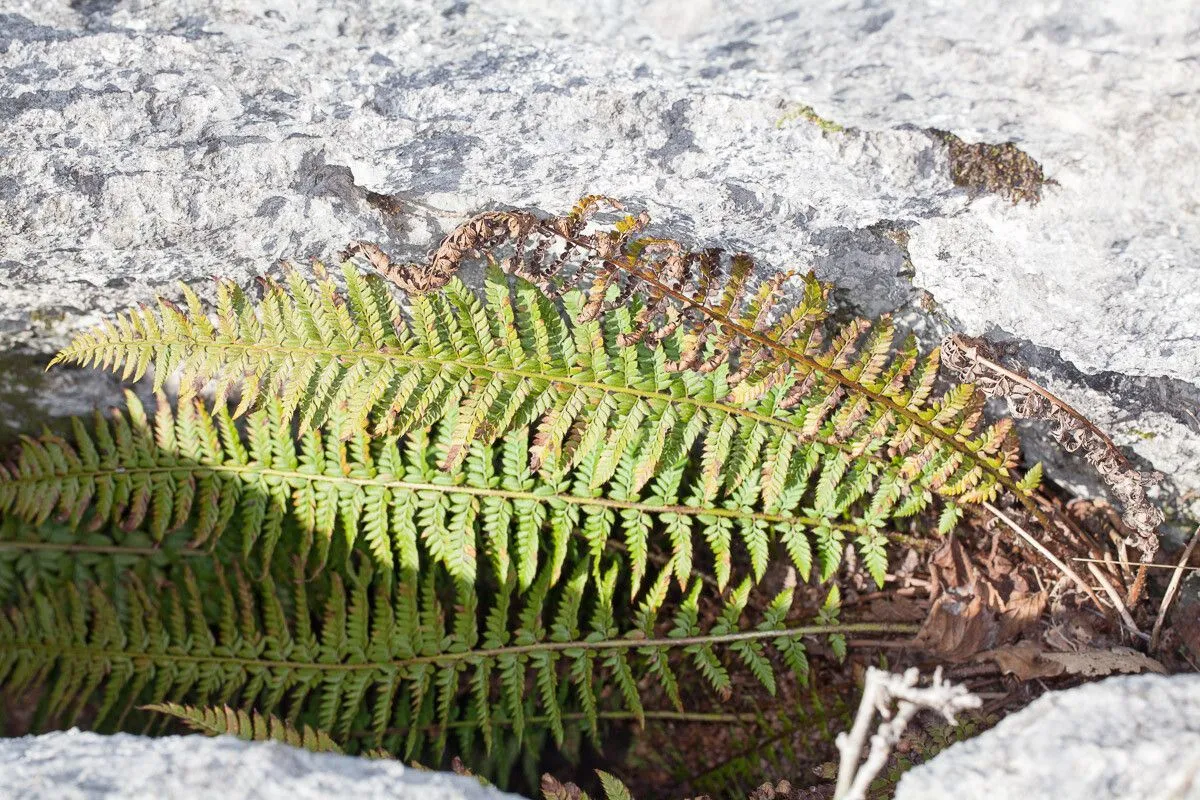
Author: (L.) Roth
Bibliography: Tent. Fl. Germ. 3(1.1): 79 (1799)
Year: 1799
Status: accepted
Rank: species
Genus: Polystichum
Vegetable: False
Observations: Macaronesia, NW. Africa, Europe to Xinjiang
The Hard shield-fern, scientifically known as Polystichum aculeatum, stands as a prominent species within the Polypodiaceae family. Originally detailed in the publication “Tent. Fl. Germ.” in 1799 by the botanist Albrecht Wilhelm Roth, this plant has captured the intrigue of botanists and nature enthusiasts alike.
Polystichum aculeatum thrives in diverse geographical regions, prominently in Macaronesia, Northwest Africa, and stretches its presence across Europe to the vast ranges of Xinjiang. This wide distribution highlights the fern’s adaptability and evolutionary success in various climates and terrains.
The taxonomical journey of the Hard shield-fern is notable, traceable to the influential work of Carl Linnaeus. Roth’s contribution polished its description and taxonomy, augmenting our understanding of this species and aiding its identification across its extensive range.
Members of the Polypodiaceae family, including Polystichum aculeatum, are renowned for their hardy nature and resilience. The Hard shield-fern exemplifies these traits, often found in forested, shaded areas where it can fully exhibit its lush, green fronds, which are characteristically spiky—hence, the descriptor “aculeatum” in its scientific name, meaning “prickly” or “spiny.”
Botanically, the Hard shield-fern is an evergreen perennial, forming robust clumps that create a striking visual in its natural habitat. Its pinnate fronds are accentuated by a dark, glossy green coloration, enabling an adaptive advantage for photosynthesis under canopy shade. The plant’s overall structure, with rigid fronds and a tufty base, further supports its persistence in various ecological niches.
Observations of Polystichum aculeatum across its habitat range reveal its ecological importance. In woodland environments, it contributes to the undergrowth layer, providing shelter and contributing to the biodiversity of the ecosystem. In some cultures, it has been historically valued for its ornamental beauty and has a presence in traditional horticulture.
In summary, the Hard shield-fern, Polystichum aculeatum, is a testament to botanical resilience and adaptability. Its broad distribution, distinctive morphology, and ecological role make it a significant species within the Polypodiaceae family, meriting its recognition in botanical literature and cultivation.
Dan: almindelig skjoldbregne, glat skjoldbregne, ægte skjoldbregne
Deu: dorniger schildfarn, gelappter schildfarn
Eng: hard shield-fern, hard shield fern, hard-shield fern
Spa: portia
Lav: daivaina cietpaparde
Nor: hvas-jedske
Fra: polystic à aiguillons
Nld: stijve naaldvaren
Swe: uddbräken
Cym: gwrychdredynen galed, gwrychredyn caled, gwrychredynen galed, march-redynen glustiog, marchredynen wrychog
En: Hard shield-fern
Zh: 欧洲耳蕨
Cs: Kapradina laločnatá
Nl: Stijve naaldvaren
Et: Ogane astelsõnajalg
Fi: Piikkihärkylä
Fr: Polystic à aiguillons
De: Gelappter Schildfarn, Dorniger Schildfarn
Hu: Karéjos vesepáfrány
Ga: Ibheag chrua
Lt: Miškinis spyglainis
No: Falkbregne
Fa: سرخس مقدس
Pl: Paprotnik kolczysty
Sv: Uddbräken
Uk: Багаторядник шипуватий
Cy: Gwrychredynen galed
: Hard shield fern
Taken Feb 23, 2022 by PlantWizard (cc-by-sa)
Taken Jun 16, 2022 by Anatas (cc-by-sa)
Taken Jun 16, 2022 by Anatas (cc-by-sa)
Taken Aug 30, 2020 by Rodríguez Riesgo Mónica (cc-by-sa)
Taken Feb 23, 2022 by célia célia (cc-by-sa)
Taken Apr 17, 2010 by Martin Bishop (cc-by-sa)
Taken Jun 16, 2022 by Anatas (cc-by-sa)
Taken Apr 17, 2010 by Martin Bishop (cc-by-sa)
Taken Jan 25, 2020 by Daniel Bäck (cc-by-sa)
Taken Jul 24, 2022 by Nicola Loher (cc-by-sa)
Taken Jul 16, 2021 by Mariska Eekma (cc-by-sa)
Taken May 21, 2022 by Rosa Sulis (cc-by-sa)
© copyright of the Board of Trustees of the Royal Botanic Gardens, Kew.
© copyright of the Board of Trustees of the Royal Botanic Gardens, Kew.
© copyright of the Board of Trustees of the Royal Botanic Gardens, Kew.
Ph maximum: 7.0
Ph minimum: 6.5
Light: 3
Atmospheric humidity: 7
Bloom months: [‘may’, ‘jun’, ‘jul’, ‘aug’, ‘sep’, ‘oct’]
Soil nutriments: 6
Family: Myrtaceae Author: (F.Muell.) K.D.Hill & L.A.S.Johnson Bibliography: Telopea 6: 402 (1995) Year: 1995 Status:…
Family: Rubiaceae Author: Pierre ex A.Froehner Bibliography: Notizbl. Bot. Gart. Berlin-Dahlem 1: 237 (1897) Year:…
Family: Sapindaceae Author: Koidz. Bibliography: J. Coll. Sci. Imp. Univ. Tokyo 32(1): 38 (1911) Year:…
Family: Asteraceae Author: A.Gray Bibliography: Pacif. Railr. Rep.: 107 (1857) Year: 1857 Status: accepted Rank:…
Family: Fabaceae Author: Medik. Bibliography: Vorles. Churpfälz. Phys.-Ökon. Ges. 2: 398 (1787) Year: 1787 Status:…
Family: Aspleniaceae Author: (Cav.) Alston Bibliography: Bull. Misc. Inform. Kew 1932: 309 (1932) Year: 1932…